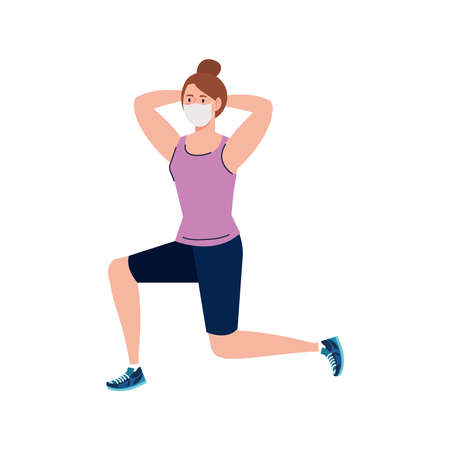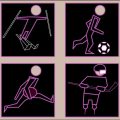Introduction to Rehabilitation Equipment in the UK
Physical rehabilitation plays a vital role in helping individuals recover from injury, surgery, or long-term health conditions. In the United Kingdom, the use of resistance bands and weights has become an integral part of modern rehabilitation programmes. These tools are widely recommended by physiotherapists, occupational therapists, and other healthcare professionals across the NHS and private practices. Their versatility allows for tailored exercise plans that suit a range of abilities and recovery stages, making them accessible for people of all ages and backgrounds. This section provides an overview of how resistance bands and weights are utilised within the UK’s healthcare system, emphasising their importance in restoring strength, improving mobility, and supporting patient independence during recovery. As the focus on personalised care continues to grow in British healthcare, understanding these equipment options is essential for both patients and practitioners aiming to achieve optimal rehabilitation outcomes.
2. Types of Resistance Bands and Weights Available Locally
Understanding the range of resistance bands and weights available in the UK is crucial for anyone engaged in rehabilitation. This section provides a detailed look at the varieties, materials, and sources of these essential tools, referencing NHS recommendations and local availability.
Resistance Bands: Varieties and Materials
Resistance bands come in several forms, each suited to different rehabilitation needs. The most common types found in the UK include loop bands, therapy bands (flat), tube bands with handles, and figure-of-eight bands. Materials typically used are latex, non-latex synthetic rubber (for those with allergies), and fabric blends.
| Type | Description | Common Materials | Best For |
|---|---|---|---|
| Loop Bands | Circular bands; various resistance levels | Latex, Fabric | Lower body exercises, glute activation |
| Therapy Bands (Flat) | Long, flat strips without handles | Latex, Synthetic Rubber | Rehabilitation, gentle stretching |
| Tube Bands with Handles | Tubular design with attached handles | Latex, Synthetic Rubber | Upper body strength training |
| Figure-of-Eight Bands | Shaped like an “8” with handles or loops | Latex, Synthetic Rubber | Targeted resistance exercises, grip work |
Weights: Options and Considerations
The weights commonly used for rehabilitation in the UK fall into three main categories: dumbbells, wrist/ankle weights, and kettlebells. Each serves a specific purpose in progressive resistance training.
| Type | Description | Material Options | NHS Recommendation* |
|---|---|---|---|
| Dumbbells | Hand-held free weights; variable weight increments | Cement-filled plastic, neoprene-coated steel, cast iron | Yes – recommended for graded strengthening exercises** |
| Ankle/Wrist Weights | Soft weights strapped to limbs for added resistance during movement | Nylon/fabric sleeves with sand/metal filling | Yes – particularly for lower limb rehab** |
| Kettlebells | Cannonball-shaped weights with a handle | Cast iron, vinyl-coated steel | No specific NHS guidance; use under professional supervision |
*NHS guidance may vary by condition and setting.
**Consult your physio or GP before starting any new exercise regime.
Sourcing Resistance Equipment Locally in the UK
You can purchase resistance bands and weights from a variety of sources:
- NHS Supply Chain: Some physiotherapy clinics provide basic equipment or can advise on NHS-approved suppliers.
- High Street Retailers: Boots, Argos, Decathlon and Sports Direct offer a wide selection of resistance equipment suitable for home use.
- Specialist Online Stores: UK-based sites such as PhysioRoom.co.uk or Rehab-Store.co.uk stock clinically-approved options.
- Community Initiatives: Local councils or NHS trusts sometimes run exercise equipment loan schemes—check with your local authority.
NHS Recommendations on Purchasing Equipment
The NHS advises choosing equipment that matches your current ability and rehabilitation goals. Opt for well-reviewed products from reputable suppliers to ensure safety and durability. If you have specific health concerns or conditions (such as latex allergies), discuss alternatives with your physiotherapist.
In summary, the UK market offers a comprehensive range of resistance bands and weights suitable for all stages of rehabilitation. With careful selection based on NHS advice and local availability, you can build a safe and effective home rehab toolkit.

3. How to Choose the Right Equipment for Rehabilitation
Selecting the correct resistance bands and weights is a cornerstone of effective rehabilitation, especially within the context of UK physiotherapy practices. The right equipment can accelerate recovery, reduce the risk of re-injury, and ensure a smoother transition back to daily activities or sport. This section provides practical guidance on making informed choices based on injury types, stages of recovery, and established UK rehabilitation protocols.
Understanding Your Injury Type
The first step in choosing equipment is to consider the nature and severity of your injury. For example:
- Muscle strains and ligament sprains: Begin with light resistance bands (often colour-coded yellow or red) that provide gentle support without overloading healing tissues.
- Joint injuries (e.g., knee or shoulder): Opt for loop bands or tube bands with handles for controlled movements targeting stabilising muscles.
- Post-operative recovery: Your physiotherapist may recommend very light resistance or even simple bodyweight movements before progressing to bands or small hand weights.
Stages of Recovery
The stage of your rehabilitation will greatly influence your choice of equipment:
- Early stage: Focus on mobility and gentle activation using low-resistance bands; avoid heavy weights which can compromise healing.
- Mid-stage: Progress to moderate resistance bands (green or blue) as strength and range improve. Incorporate light dumbbells (0.5–2 kg) if cleared by your therapist.
- Late stage: Use heavier resistance bands (black or silver) or free weights (up to 5 kg or more), aiming to restore full function and prepare for return to activity.
UK-Specific Rehabilitation Protocols
NHS guidelines and Chartered Society of Physiotherapy standards often emphasise gradual progression, patient safety, and functional outcomes. When selecting equipment, it’s vital to adhere to these protocols:
- Always consult with a qualified physiotherapist before starting new exercises or increasing resistance.
- Prioritise quality British brands where possible, ensuring safety compliance and durability.
- If attending NHS physiotherapy, ask about community equipment loan schemes available in many UK regions.
Practical Tips for Equipment Selection
– Start small: Its safer to begin with lighter resistance and gradually progress.- Colour codes matter: In most UK brands, lighter colours indicate less resistance; check packaging carefully.- Diversity counts: A mix of flat bands, loop bands, and adjustable hand weights offers flexibility as you advance through different stages.- Consider home space: Resistance bands are compact and ideal for small UK flats; free weights may require more storage.- Monitor wear and tear: Replace bands that show signs of damage to avoid injury.
Ultimately, the best equipment is what fits your current needs and rehabilitation plan. Open communication with your healthcare provider ensures that your choices align with evidence-based UK practices for optimal recovery.
4. Safe and Effective Usage: Best Practices
When incorporating resistance bands and weights into rehabilitation programmes across the UK, prioritising safety and effective use is paramount. Below, we offer practical advice based on UK safety standards and recommendations from qualified physiotherapists.
Key Guidelines for Safe Use
- Consult a Professional: Always seek guidance from a Chartered Physiotherapist or a registered healthcare professional before commencing any rehabilitation routine.
- Start Gradually: Begin with low resistance or lighter weights, especially if you are new to these tools or recovering from injury.
- Inspect Equipment Regularly: Check for wear, tears, cracks, or signs of fatigue in bands and weights before each session.
- Follow Correct Techniques: Adhere to prescribed movements and avoid improvisation to reduce the risk of injury.
- Stay Within Your Limits: Never push through pain—discomfort can be expected, but sharp pain is a warning sign.
Maintenance, Cleaning, and Storage
Proper care of your resistance bands and weights extends their lifespan and maintains hygiene. The table below summarises essential maintenance practices in line with UK recommendations:
| Aspect | Best Practice |
|---|---|
| Cleaning | Wipe bands with a damp cloth; use mild soap for stubborn dirt. Avoid harsh chemicals that may degrade material. Weights can be wiped with antibacterial wipes. |
| Drying | Air dry equipment thoroughly before storage to prevent mould and corrosion. |
| Storage | Store in a cool, dry place away from direct sunlight and heat sources. Keep out of reach of children when not supervised. |
| Inspection Frequency | Weekly for frequent users; before each use if recovering from injury or relying heavily on equipment integrity. |
UK Safety Standards & Compliance
- CE Marking: Purchase resistance bands and weights that comply with UKCA/CE marking requirements to ensure product quality and safety.
- User Instructions: Only use equipment according to manufacturer guidelines provided with the product packaging.
- Safe Environment: Perform exercises on non-slip surfaces and clear spaces free from tripping hazards.
A Final Word from UK Physiotherapists
NHS physiotherapists emphasise the importance of regular assessment during rehabilitation, adjusting resistance levels as progress is made. Record your sessions in an exercise diary to track improvement and share updates with your healthcare provider for ongoing guidance.
5. Sample Rehabilitation Routines and Progress Tracking
Example Routines Using Resistance Bands
Resistance bands offer a versatile and accessible way to support rehabilitation at home or in a clinic. For instance, individuals recovering from knee injuries may start with simple seated leg extensions using a light resistance band, gradually progressing to standing hamstring curls. For shoulder rehabilitation, external rotations and scapular retractions with a medium-resistance band are commonly recommended by UK physiotherapists. Each exercise should be performed in controlled repetitions, usually 10–15 per set, with 2–3 sets as advised by your physiotherapist.
Example Routines Using Weights
Free weights and ankle weights are widely used in progressive rehabilitation routines across the UK. For example, after an initial phase with resistance bands, patients might introduce 1–2 kg dumbbells for bicep curls or shoulder presses, depending on the injury and medical advice. Lower limb rehabilitation often includes step-ups onto a low platform with ankle weights, always under supervision when starting out. The focus is on slow progression—adding small increments of weight only when exercises can be completed comfortably and pain-free.
Monitoring Progress: UK-Oriented Approaches
Effective progress tracking is essential for successful rehabilitation. In the UK, patients are encouraged to keep a detailed exercise diary—either paper-based or via NHS-recommended digital apps such as myHealth@QEHB or MyTherapy. These tools help track sets, repetitions, resistance levels, and subjective pain ratings. Additionally, many NHS trusts provide printable progress sheets to record milestones and note feedback from each physio session.
Working Collaboratively with Healthcare Professionals
UK-based rehabilitation emphasises regular communication with healthcare providers. Patients are urged to attend scheduled follow-up appointments with their physiotherapist or GP to review progress and adapt routines as needed. Open dialogue ensures that any discomfort or setbacks are addressed promptly, minimising risk of re-injury. If you’re working privately or through the NHS, sharing your progress records with your care team supports evidence-based adjustments and helps maintain motivation throughout your recovery journey.
Key Takeaways for Rehabilitation in the UK Context
Rehabilitation success hinges on personalised routines, consistent progress tracking using local resources, and proactive engagement with healthcare professionals. By integrating resistance bands and weights into tailored programmes—and leveraging UK-specific support systems—you can optimise your recovery process safely and effectively.
6. Sourcing Support and Further Resources in the UK
Finding Professional Guidance
Seeking expert advice is a key component of any successful rehabilitation journey. In the UK, physiotherapists registered with the Chartered Society of Physiotherapy (CSP) are trained to tailor resistance band and weight programmes to your specific needs. Your GP can provide referrals to local NHS physiotherapy services, while many private clinics also offer specialist rehabilitation support. For personalised plans, always ensure your chosen practitioner is HCPC-registered (Health and Care Professions Council).
Community-Based Resources
The UK has a wealth of community resources designed to support rehabilitation outside traditional clinical settings. Local leisure centres and council-run gyms often run classes or drop-in sessions for those recovering from injury or surgery. Many regions have support groups—either independently organised or through charities such as Versus Arthritis—that focus on safe exercise, including resistance bands and light weights. Your local library or council website may list upcoming events or ongoing programmes.
Trusted Online Information
Navigating online information can be daunting, but several reputable UK-based websites provide reliable guidance on rehabilitation exercises. The NHS Live Well portal offers clear instructions and safety tips for exercising with resistance bands and weights. Similarly, organisations like Physiotherapy UK and national charities provide downloadable guides and instructional videos that adhere to British standards of care.
Connecting with Others
Peer support can be invaluable during rehabilitation. Consider joining local or online forums such as Patient.info, where you can share experiences and tips with others on similar recovery journeys. Social media groups focused on UK rehabilitation also offer a sense of community and motivation.
A Note on Equipment Suppliers
When purchasing resistance bands or weights in the UK, look for suppliers that comply with British safety standards (such as CE marking). Many high street retailers, specialist sports shops, and trusted online platforms cater specifically to rehabilitation needs.
In summary, leveraging professional expertise, tapping into community resources, using reliable online materials, connecting with peers, and sourcing safe equipment will help ensure your rehabilitation with resistance bands and weights is both effective and safe within the UK context.

